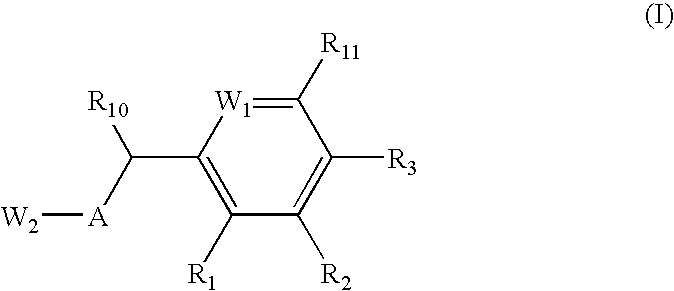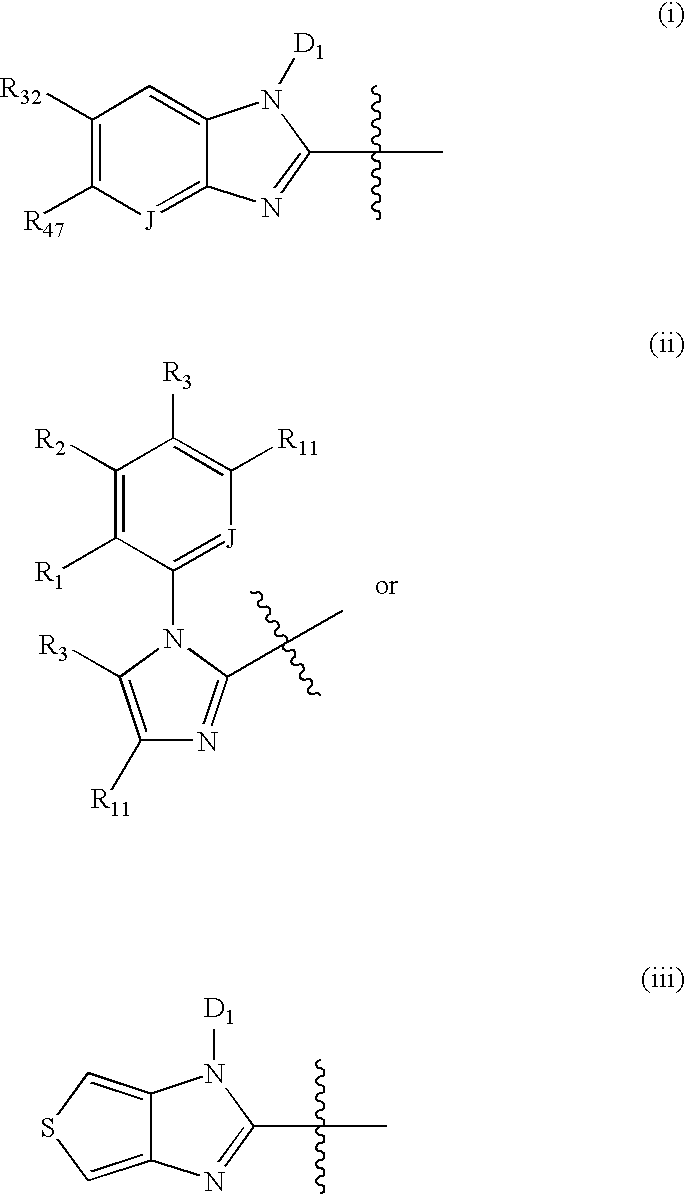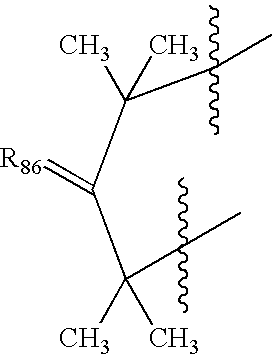Nitrosated proton pump inhibitors, compositions and methods of use
a proton pump inhibitor and nitrosated technology, applied in the field of new drugs, can solve the problems of gastrointestinal disorders that are difficult to treat with proton pump inhibitors, bacterial overgrowth in the gastrointestinal tract, and high relapse rate of proton pump inhibitor treatment, so as to reduce the rate of recurrence of ulcers, improve the anti-helicobacter properties and anti-bacterial properties of proton pump inhibitors, and facilitate ulcer healing
- Summary
- Abstract
- Description
- Claims
- Application Information
AI Technical Summary
Benefits of technology
Problems solved by technology
Method used
Image
Examples
example 1
2-(Nitrooxy)ethyl 2-(((3-Methyl-4-(2,2,2-trifluoroethoxy)-2-pyridyl)methyl)sulfinyl)benzimidazolecarboxylate
1a. 2-(Nitrooxy)ethan-1-ol
[0456]A mixture of 2-bromoethanol (5.18 g, 41 mmol) and silver nitrate (21.25 g, 125 mmol) in acetonitrile (100 mL) was stirred at room temperature for 22 hours and then concentrated to dryness. The residue was taken up in diethylether (100 mL), treated with a saturated aqueous NaCl solution (100 mL), and stirred for 5 minutes. After filtration, the organic layer was separated, washed with water, dried over sodium sulfate, filtered, concentrated and dried under vacuum to give the title compound (3.12 g, 71% yield) as a colorless oil. 1H NMR (300 MHz, CDCl3) δ 4.61–4.57 (m, 2H), 3.94–3.91 (m, 2H), 2.12 (br, 1H).
1b. 2-(Nitrooxy)ethyl Chlorooate
[0457]A solution of phosgene (1.9 M, 74 mL, 140 mmol) in toluene was added to the product of Example 1a (2.98 g, 27.8 mmol). The mixture was stirred at room temperature for 18 hours and the hydrogen chloride gas p...
example 2
3-(Nitrooxy)propyl 2-(((3-methyl-4-(2,2,2-trifluoroethoxy)-2-pyridyl)methyl)sulfinyl)benzimidazolecarboxylate
2a. 3-(Nitrooxy)propan-1-ol
[0459]A mixture of 3-bromopropanol (3.56 g, 25.6 mmol) and silver nitrate (13.1 g, 77 mmol) in acetonitrile (50 mL) was stirred at room temperature for 61 hours and then concentrated to dryness. The residue was suspended in diethylether (150 mL), a saturated aqueous NaCl solution (150 mL) was added, and the mixture was stirred for 10 minutes. After filtration, the organic layer was washed with water, dried over sodium sulfate, filtered, concentrated and dried under vacuum to give the title compound (2.05 g, 66% yield) as an oil. 1H NMR (300 MHz, CDCl3) δ 4.61 (t, J=6.3 Hz, 2H), 3.75 (t, J=6.1 Hz, 2H), 2.81 (br, 1H), 2.02–1.93 (m, 2H).
2b. 3-(Nitrooxy)propyl Chlorooate
[0460]A solution of phosgene (1.9 M, 26 mL, 50 mmol) in toluene was added to the product of Example 2a (2.00 g, 16.5 mmol), and the resulting solution was stirred at room temperature for...
example 3
5-(Nitrooxy)pentyl 2-(((3-methyl-4-(2,2,2-trifluoroethoxy)-2-pyridyl)methyl)sulfinyl)benzimidazolecarboxylate
3a. 5-(Nitrooxy)pentan-1-ol
[0462]A mixture of 5-bromo-1-pentanol (4.90 g, 29.3 mmol) and silver nitrate (14.9 g, 88 mmol) in acetonitrile (120 mL) was stirred at room temperature for 41 hours and then concentrated to dryness. The residue was suspended in diethylether (150 mL), a saturated aqueous NaCl solution (150 mL) was added, and the mixture was stirred for 10 minutes. After filtration, the organic layer was washed with brine, dried over sodium sulfate, filtered, concentrated and dried under vacuum to give the title compound (3.10 g, 71% yield) as a yellow oil. 1H NMR (300 MHz, CDCl3) δ 4.47 (t, J=6.6 Hz, 2H), 3.65 (t, J=6.2 Hz, 2H), 2.07 br, 1H), 1.80–1.74 (m, 2H), 1.64–1.45 (m, 4H). 13C NMR (75 MHz, CDCl3) δ 73.2, 62.2, 31.9, 26.4, 21.9.
3b. 5-(Nitrooxy)pentyl Chlorooate
[0463]A solution of phosgene (1.9 M, 25 mL, 48 mmol) in toluene was added to the product of Example 3a...
PUM
| Property | Measurement | Unit |
|---|---|---|
| temperature | aaaaa | aaaaa |
| temperature | aaaaa | aaaaa |
| temperature | aaaaa | aaaaa |
Abstract
Description
Claims
Application Information
 Login to View More
Login to View More - R&D Engineer
- R&D Manager
- IP Professional
- Industry Leading Data Capabilities
- Powerful AI technology
- Patent DNA Extraction
Browse by: Latest US Patents, China's latest patents, Technical Efficacy Thesaurus, Application Domain, Technology Topic, Popular Technical Reports.
© 2024 PatSnap. All rights reserved.Legal|Privacy policy|Modern Slavery Act Transparency Statement|Sitemap|About US| Contact US: help@patsnap.com










